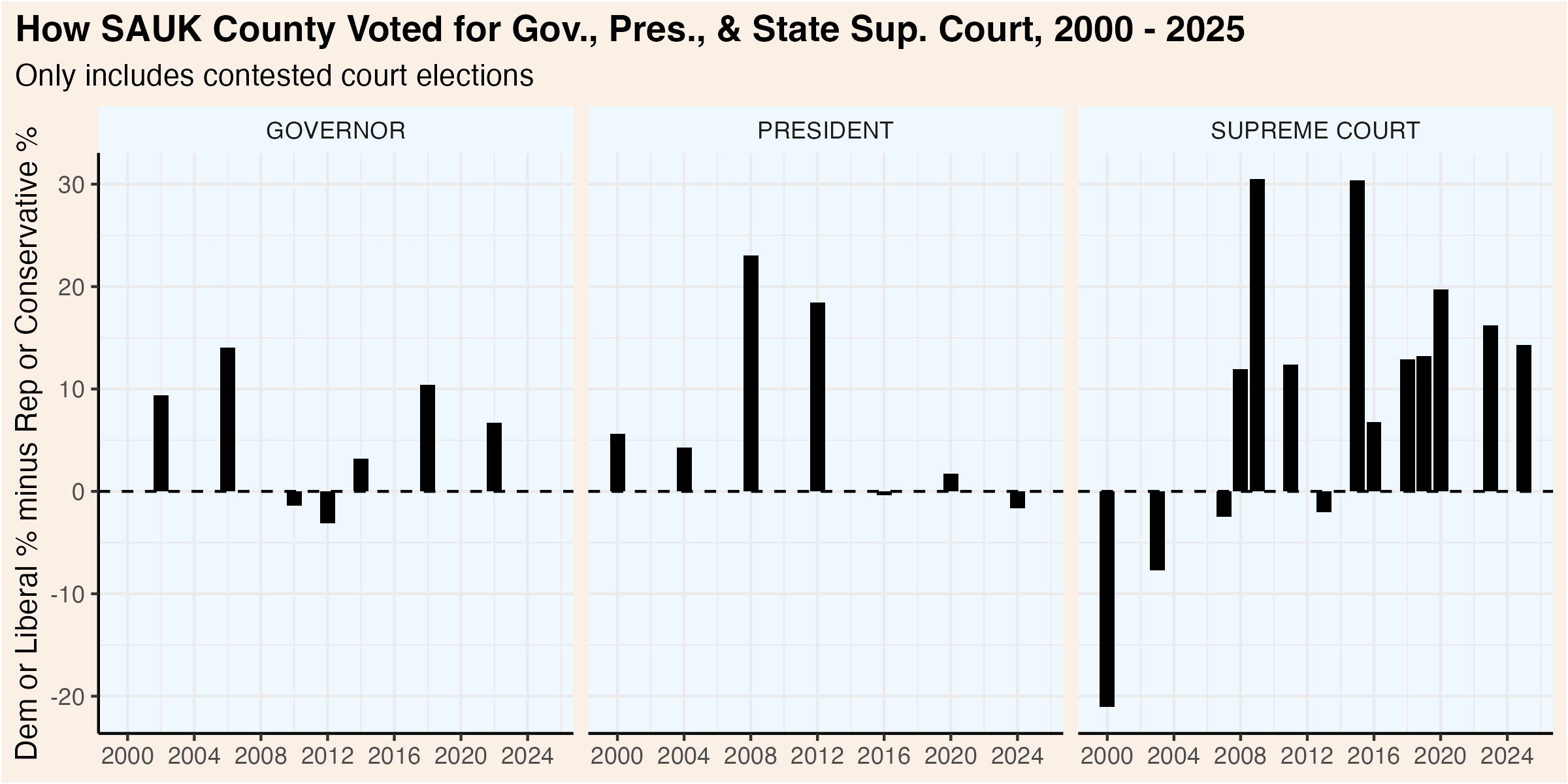
58 Sauk
Sauk County (pop. 66,000) is located to the northwest of Dane County. Its population is 87% white and has slightly lower levels of college attainment that the state average, but the county’s median age, income and poverty rate are fairly close to state averages. Among Wisconsin counties, it is the closest thing to a bellweather, having matched all but one state result in elections for President, Governor, and US Senator since 2000. The sole miss was the 2014 gubernatorial race, when Sauk County narrowly voted for Mary Burke.
58.1 Demographics

58.2 County Election Results

Click each column name to sort its values.
58.3 Municipality Election Results
Sauk County has two relatively large municipalities. The City of Baraboo has about 12,500 residents and the City of Reedsburg has 10,000. The county also contains 17 municipalities with between 1,000 and 5,000 residents. Some municipalities in the county are strongly Democratic, including the villages of Spring Green, Sauk City, and Prairie du Sac. Others are strongly conservative, including the Town of Westfield, and the villages of Ironton and Rock Springs. But most communities in Sauk County are quite competitive. This category includes the City of Reedsburg and also the Village of Merrimac.
This map shows the location of each municipality in the county, as it existed in 2022.

These dot plots show the most recent election results in each municipality.



To more clearly illustrate recent changes in municipality voting trends, these scatterplots compare the most recent vote for president and senator with the shift from that office’s previous election.


These maps show show every election result since 2000 in each municipality.



Click each column name to sort its values.
58.4 Supreme Court Election Results
Wisconsin’s Supreme Court has 7 justices, each of whom are elected to 10 year terms in statewide elections held in April. State law prohibits more than one Supreme Court election from being held in a single year. If a seat becomes vacant, the governor appoints a replacement who serves until the next year in which no court election is already scheduled. If more than two candidates achieve ballot access, a nonpartisan, top-two primary is held in February.
Court elections are formally nonpartisan, but candidates are usually supported by either liberals or conservatives. In recent years, it has become common for the Democratic and Republican parties to endorse and actively campaign on behalf of favored judicial candidates. The liberal and conservative labels indicated in the following graphs and tables are based on widely recognized tendencies, not any formal affiliation.
58.4.1 County Election Results
This graphic compares how presidential, gubernatorial, and court elections have trended over the past quarter century. Click the “Table” tab to see detailed results for the Supreme Court races.

58.4.2 Municipality Election Results
The following table shows the results of each Supreme Court election by municipality. The graphic visualizes the shifts over the past three court elections.
